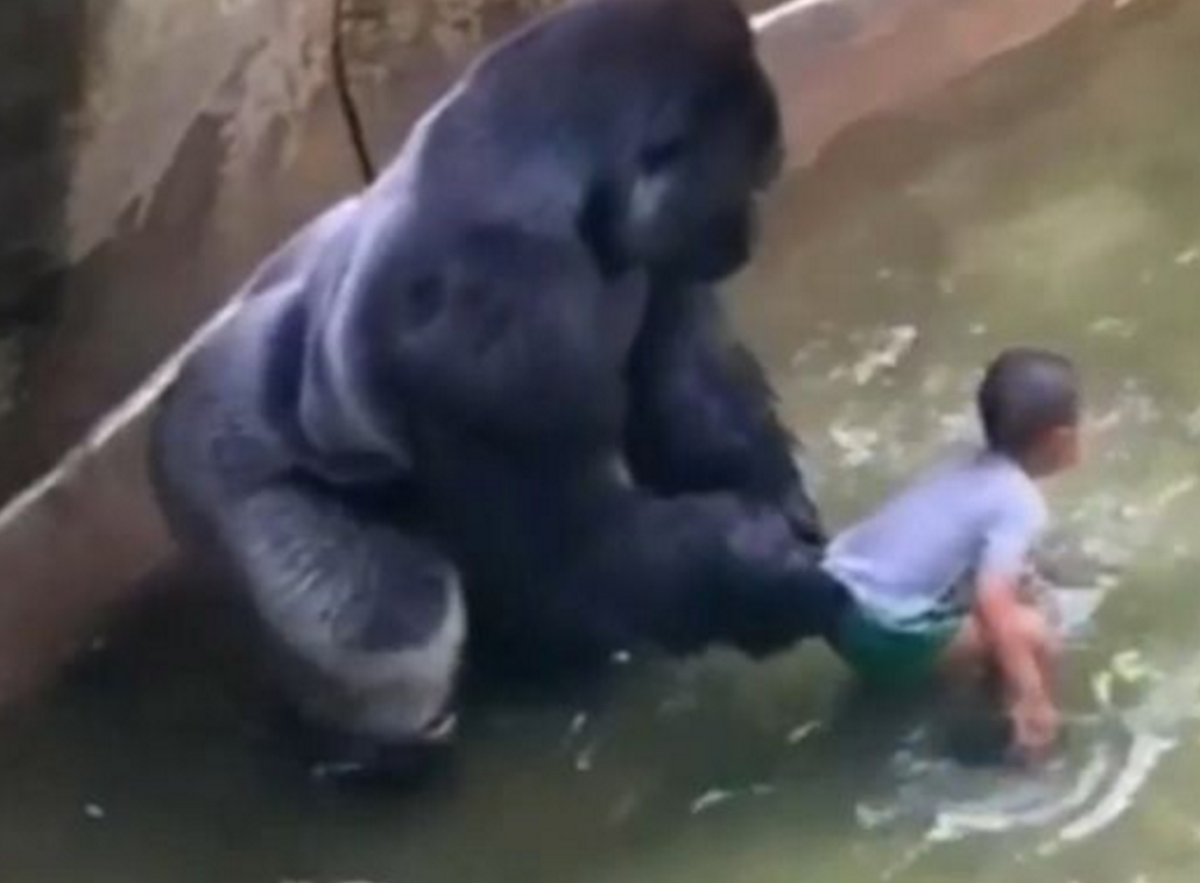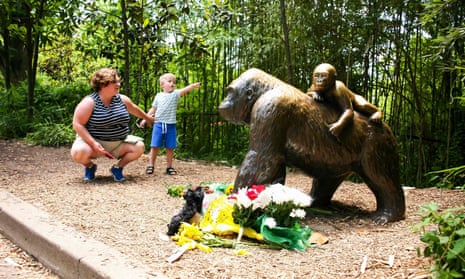Nearly a decade has passed, yet the story of Harambe — a 17-year-old silverback gorilla at the Cincinnati Zoo — continues to spark conversations worldwide. The incident in 2016 not only captured global attention but also ignited deeper debates about animal welfare, zoo safety, and human responsibility.
The Day That Changed Everything

On May 28, 2016, a young child managed to slip past barriers and fell into the gorilla enclosure. Harambe, weighing more than 400 pounds, approached the boy. Video footage shows moments of interaction, some appearing calm, others more concerning as the gorilla moved the child through shallow water.
The zoo’s emergency team had to act within seconds. After assessing the risks, they made the decision to use lethal force to protect the child. Harambe’s death was immediate, and the boy was rescued unharmed.
Public Reaction and Global Debate

News of the event quickly went viral. For many, the zoo’s decision was understandable — ensuring human safety above all else. Others argued that the incident revealed weaknesses in zoo design and raised ethical concerns about keeping such intelligent animals in captivity.
Harambe soon became more than a headline. His name turned into a symbol, sparking memes, discussions, and long-lasting debates about the role of zoos in modern society.
Was Harambe a Threat or Protector?

Animal behavior experts remain divided. Some point to Harambe’s actions as protective instincts, suggesting curiosity rather than aggression. Others emphasize the undeniable risk: even without hostile intent, a gorilla’s strength could endanger a child’s life instantly.
This divide reflects the difficulty of interpreting animal behavior under crisis. In the end, zoo officials had only moments to decide — and they prioritized the child’s survival.
Broader Questions About Zoos
The incident highlighted a bigger conversation: Should great apes like gorillas be kept in captivity at all?
-
Critics argue that no enclosure can truly replicate life in the wild, and confining such intelligent animals raises ethical concerns.
-
Supporters counter that modern zoos contribute to conservation, species survival, and public education, which may be vital for endangered animals.
Harambe’s story became a touchpoint for examining these competing perspectives.
Lessons in Safety and Responsibility
Beyond ethical questions, the event underscored practical challenges. How did a child manage to breach zoo barriers? Could better design or supervision have prevented the accident altogether?
In response, many zoos around the world reviewed and strengthened their safety measures, redesigning enclosures and reinforcing visitor protocols. These changes aimed to ensure that both humans and animals would be protected in the future.
Harambe as a Cultural Symbol
Harambe’s legacy also lives on in culture. He became an internet phenomenon, but beneath the memes lies a lasting reminder of the fragile relationship between humans and wildlife.
His story symbolizes the difficult balance between ensuring safety and respecting animal life. It challenges us to think about coexistence, conservation, and how our actions shape the futures of other species.
The Enduring Legacy

Almost ten years later, Harambe’s name still resonates. His story raises questions about:
-
Animal ethics: Should certain animals remain in captivity?
-
Human responsibility: How can parents, institutions, and communities ensure safety?
-
Conservation awareness: How can tragedies spark greater commitment to protecting endangered species?
The Cincinnati Zoo tragedy may never be viewed the same way by everyone. Yet it undeniably changed the way zoos and the public think about safety, compassion, and accountability.
Conclusion
Harambe’s story is not just about a single incident. It represents a global reckoning with how humans interact with wildlife in controlled environments. His memory endures as a symbol — urging society to balance safety with empathy and to rethink our responsibilities toward the natural world.
Sources
-
The Independent – The only thing more upsetting than Harambe’s death
-
The New York Times – Zoo’s killing of gorilla prompts outrage
-
The Guardian – Zoo director: shooting was the right decision
